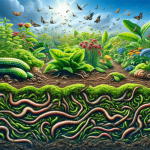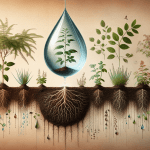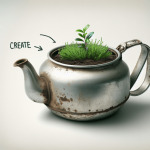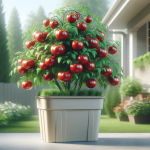This post may contain affiliate links. As an Amazon Associate, we may earn commissions from qualifying purchases.
In the article “The Process Of Rainwater Harvesting And Its Benefits. How Can Gardeners Implement Efficient Rainwater Collection Systems?”, you’ll discover how rainwater harvesting provides a sustainable way to make the most of natural water resources, reducing reliance on municipal systems and saving money.
You’ll learn about the step-by-step process of capturing, filtering, and storing rainwater, along with the myriad benefits it offers, such as supporting biodiversity and conserving water.
The guide also outlines practical tips for gardeners to set up efficient rainwater collection systems in their gardens, making your green space both eco-friendly and self-sufficient. Have you ever considered how much water you could save by capturing what falls freely from the sky? Rainwater harvesting is an ancient practice that holds considerable modern-day relevance.
It’s not just about saving water but also about promoting environmental sustainability and self-sufficiency. If you’re a gardener, you’re uniquely positioned to make the most out of rainwater harvesting. Let’s dive into the fascinating process of rainwater harvesting, explore its benefits, and discover how you can implement efficient rainwater collection systems in your garden.
What is Rainwater Harvesting?
Rainwater harvesting is the collection and storage of rainwater for reuse on-site, rather than allowing it to run off. By capturing and storing rainwater, you can reduce your dependence on municipal water supplies, save money on water bills, and contribute to environmental sustainability.
The Basic Components of a Rainwater Harvesting System
To get started with rainwater harvesting, it’s essential to understand the basic components of the system. These elements work together to efficiently capture, store, and utilize rainwater. Here are the main components:
- Catchment Area: This is usually your roof. The surface collects rainwater and channels it into the system.
- Gutters and Downspouts: These direct the collected rainwater from the roof to the storage system.
- First Flush Diverters: These devices discard the initial flow of water, which often contains debris and contaminants.
- Storage Tanks: Containers where the filtered rainwater is stored. They can be above or below ground.
- Pump and Treatment System: These are optional, depending on the use of the collected water. They help in moving the water and ensuring it is safe for its intended purpose.
- Distribution System: Piping and outlets that deliver the stored water to where it is needed, such as your garden.
Benefits of Rainwater Harvesting
Rainwater harvesting offers a myriad of benefits not only for you as a gardener but also for the environment and your community.
Environmental Benefits
- Reduces Erosion and Flooding: By capturing rainwater, you can reduce the volume of water running over surfaces, which minimizes soil erosion and decreases the risk of urban flooding.
- Decreases the Strain on Municipal Water Systems: By relying on rainwater for some of your needs, you help ease the burden on local water supplies and treatment facilities.
- Promotes Groundwater Recharge: Excess water can be directed to permeable areas where it can percolate down and replenish groundwater supplies.
Economic Benefits
- Reduces Water Bills: By using rainwater for non-potable purposes like gardening, you can significantly reduce your household water consumption and, hence, your water bill.
- Less Dependency on Municipal Water: During periods of drought or water restrictions, you’ll have a supplementary water supply to rely on.
Gardening Benefits
- Healthier Plants: Rainwater is naturally soft and free of salts and chemicals found in treated municipal water.
- Reduces Soil Salinity: Using rainwater can help flush out salt build-up in the soil, creating a healthier environment for plants.
- Enhances Growth: With fewer chemicals, plants can more readily absorb nutrients, promoting healthier and more vigorous growth.
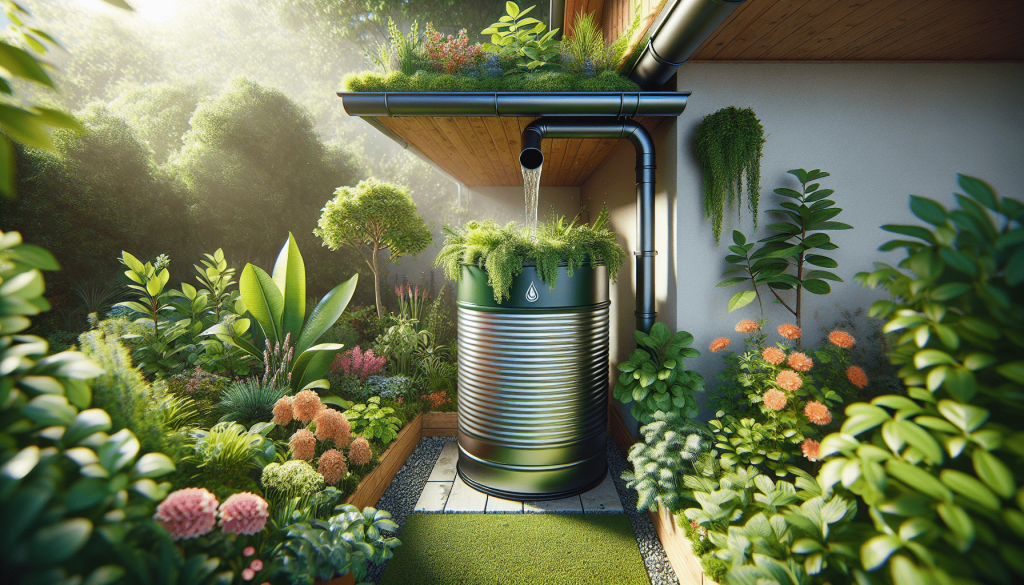
Step-by-Step Guide to Setting Up a Rainwater Harvesting System
Ready to set up your rainwater harvesting system? Follow this step-by-step guide to ensure you have an efficient and effective setup.
Step 1: Assess Your Water Needs and Rainfall
First, calculate the amount of water you need for your garden. This will depend on the types of plants you have, the size of your garden, and your local climate. Also, look at the average rainfall in your area to determine how much water you can realistically collect.
Step 2: Choose Your Catchment Area
Most residential systems use the roof as the catchment area since it covers a large space and is typically unobstructed. The material of your roof will influence the quality of the rainwater; metal roofs tend to be more suitable for harvesting than asphalt roofs.
Step 3: Install Gutters and Downspouts
Make sure your gutters and downspouts are clean and in good condition. You can install screens or guards to keep out leaves and debris. Aim the downspouts towards your storage tanks to ensure effective water directing.
Step 4: Set Up a First Flush Diverter
A first flush diverter is essential for diverting the first few gallons of rainwater, which may contain contaminants like bird droppings, dust, and other pollutants. This ensures that the stored water is cleaner.
Step 5: Choose and Install Storage Tanks
Based on your water needs and available space, choose appropriate storage tanks. These can be made of plastic, metal, or concrete. Make sure they are opaque to prevent algae growth and strong enough to withstand the weight of water. Tanks can be placed above or below ground based on space, budget, and preferences.
Step 6: Add a Pump and Filtration System (if needed)
If you plan to use the collected rainwater for tasks requiring higher pressure, like operating sprinklers, you may need a pump. Depending on the intended use of the water, you might also need a filtration system to ensure it is safe for its intended purpose.
Step 7: Connect Your Distribution System
Finally, set up the piping to deliver water from the storage tank to your garden. You can use hoses, drip irrigation systems, or sprinklers. Make sure everything is securely connected and there are no leaks.
Table: Basic Cost Breakdown for a Rainwater Harvesting System
| Component | Estimated Cost (USD) |
|---|---|
| Gutters and Downspouts | $100 – $500 |
| First Flush Diverter | $20 – $100 |
| Storage Tanks | $200 – $1,000 |
| Pump and Filtration | $150 – $600 |
| Distribution System | $50 – $300 |
| Total | $520 – $2,500 |
Best Practices for Maintaining Your Rainwater Harvesting System
Setting up your system is just the beginning. Proper maintenance ensures its longevity and efficiency.
Regularly Clean Your Gutters and Downspouts
Leaves, bird nests, and other debris can clog the system. Conduct regular inspections and clean out any accumulated debris to ensure smooth water flow.
Inspect and Repair Components
Periodically check all parts of your system for wear and tear or damage. Replace or repair any defective parts promptly. Material degradation, especially in pipes and seals, can lead to leaks and inefficiency.
Monitor Water Quality
If you use the collected rainwater for more than just irrigation, such as for personal use or consumption, regularly check the water quality. Simple test kits are available to monitor levels of contaminants and ensure your water is safe.
Secure Your Storage Tanks
Ensure that storage tanks are tightly sealed to prevent contamination from insects, rodents, and other debris. An improperly sealed tank can compromise the cleanliness of your stored water.
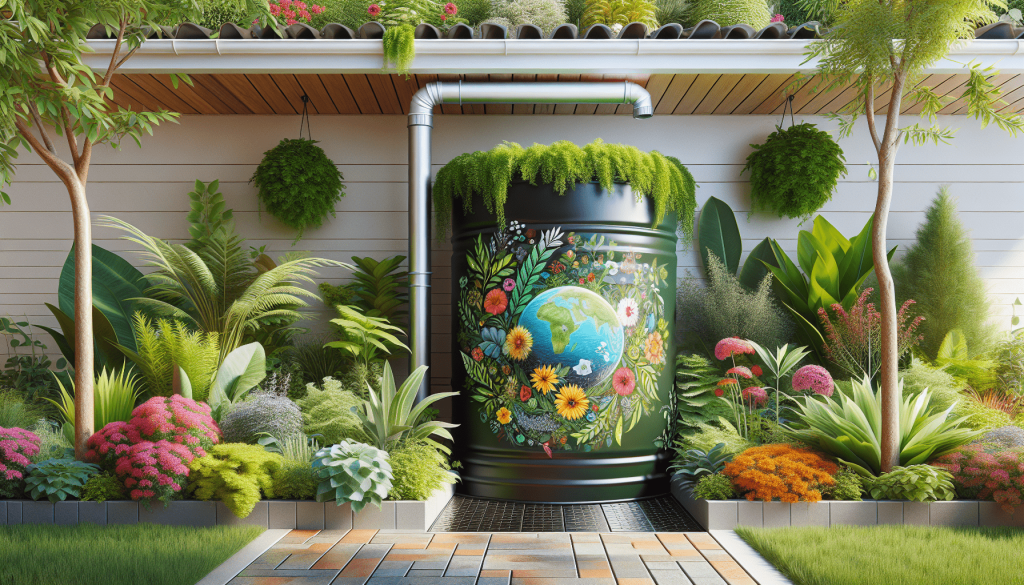
Tips for Gardeners to Optimize Rainwater Harvesting
As a gardener, maximizing the benefits from your rainwater harvesting system is essential. Here are some tips to help you efficiently collect and use rainwater.
Use Mulch to Conserve Soil Moisture
Applying mulch around your plants helps retain soil moisture, reducing the amount of irrigation needed. This lets the rainwater you collect stretch further, keeping your garden hydrated longer.
Choose Native Plants
Native plants are adapted to your local climate and usually require less water. By incorporating native plants into your garden, you’ll naturally reduce the amount of water needed for irrigation.
Install Drip Irrigation Systems
Drip irrigation delivers water directly to the plant roots, minimizing evaporation and runoff. This method is much more efficient compared to traditional sprinklers, making the best use of your harvested rainwater.
Group Plants by Water Needs
Arrange your garden so that plants with similar water requirements are grouped together. This allows for more precise watering, ensuring each plant gets the right amount without wastage.
Potential Challenges and Solutions in Rainwater Harvesting
While rainwater harvesting offers numerous benefits, you might face some challenges along the way. Here are common problems and solutions.
Challenge 1: Inconsistent Rainfall
Some regions experience highly variable rainfall, which can make it hard to depend solely on harvested rainwater.
Solution: Invest in larger storage tanks to hold more water during wet periods and use water-saving gardening practices to stretch your water supply during dry spells.
Challenge 2: Initial Setup Costs
The initial investment for a rainwater harvesting system can be relatively high.
Solution: Start small. You don’t have to install a full system right away. Begin with a basic setup and gradually expand it as funds allow. Look for local government grants or programs that may offer financial assistance.
Challenge 3: Contaminated Water
Rainwater can sometimes pick up contaminants from the catchment areas or gutters.
Solution: Install a first flush diverter and consider adding a filtration system to remove debris and pollutants. Regular maintenance also helps keep the system clean.
Challenge 4: Algae Growth in Tanks
Stagnant water and light exposure can lead to algae buildup in storage tanks.
Solution: Use opaque, tightly sealed storage tanks and regularly clean them. Consider adding a UV filter to inhibit algae growth.
Legal Aspects and Regulations
Before you begin installing a rainwater harvesting system, it’s essential to be aware of any local regulations or restrictions. Some areas have specific rules about collecting and using rainwater.
Local Regulations
Check with your local government or water authority to understand the legal aspects. Some regions may require permits or have guidelines to follow.
Health and Safety Standards
Ensure that your system complies with health and safety standards, especially if the collected rainwater will be used for potable purposes. Proper filtration and treatment are crucial for ensuring the water is safe for consumption.
Property and Building Codes
Adhere to property and building codes that may dictate how and where you can place your catchment and storage systems. This is important to avoid fines and ensure the system is safe and efficient.
Conclusion
Rainwater harvesting is a fantastic way to make use of a readily available natural resource. By understanding the process and benefits, and by setting up an efficient system, you can make your garden self-sufficient and environmentally friendly. Not only will you save money and support sustainability, but you’ll also enjoy healthier, thriving plants.
From assessing your water needs to maintaining your system, and considering all potential challenges and legal aspects, this guide covers it all. So, why wait? Start harvesting that precious rainwater and transform your garden today!
Are you ready to make a positive impact on your garden and the environment? Let’s get started with rainwater harvesting!


